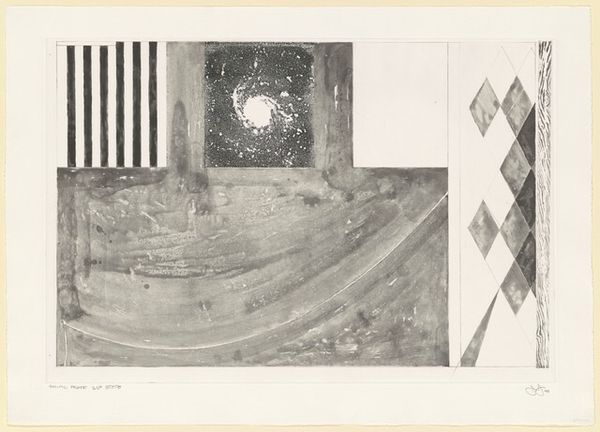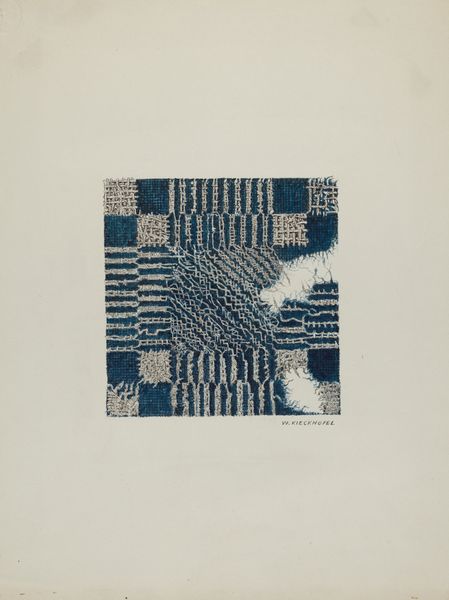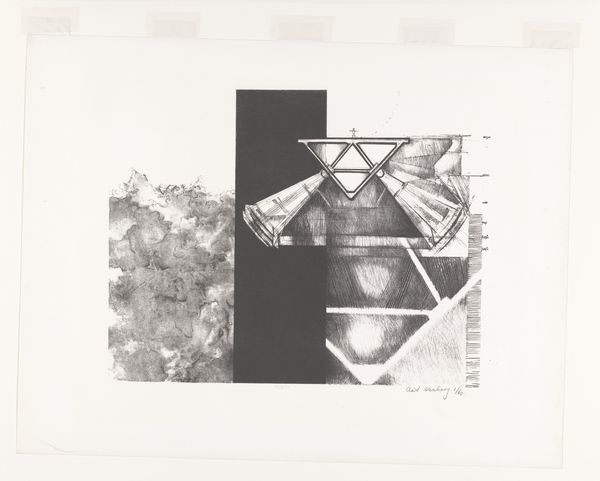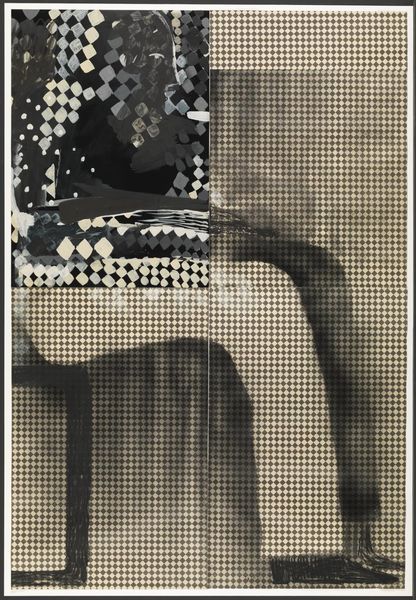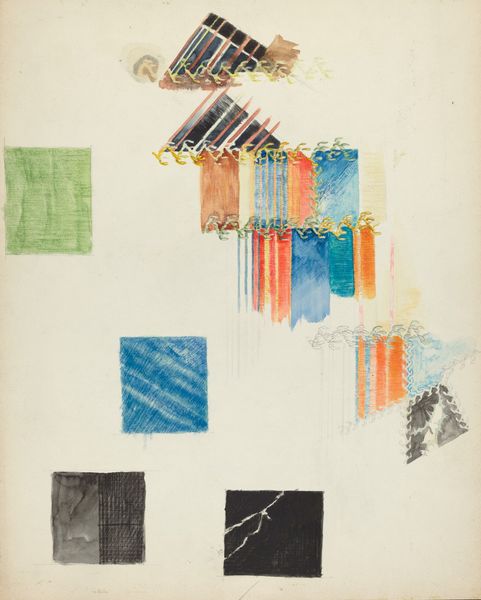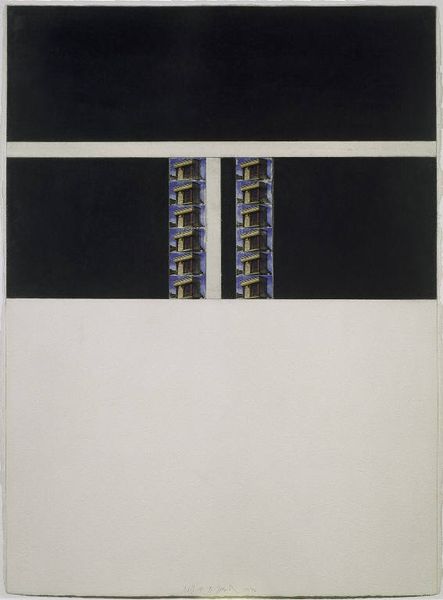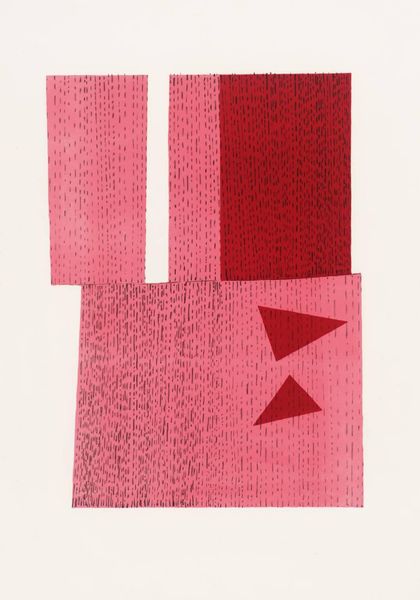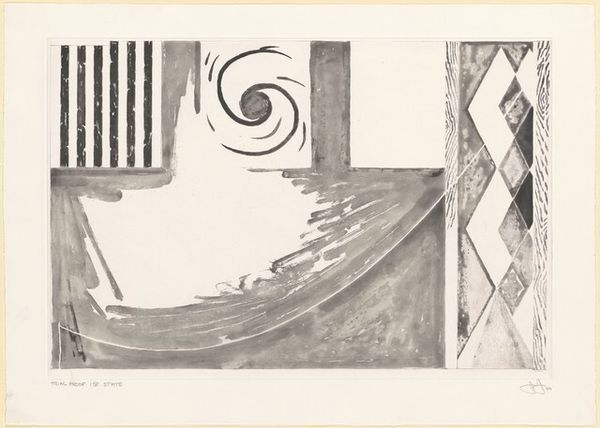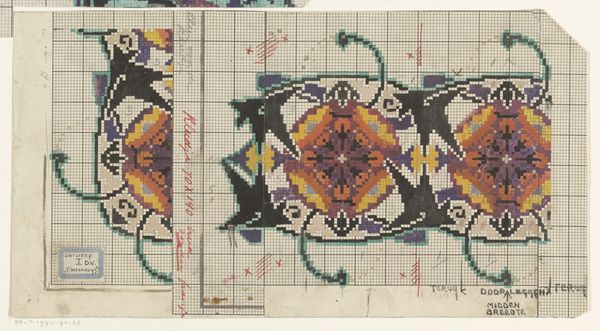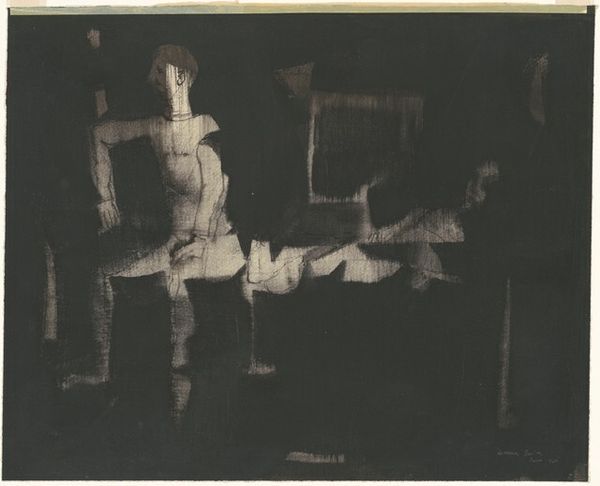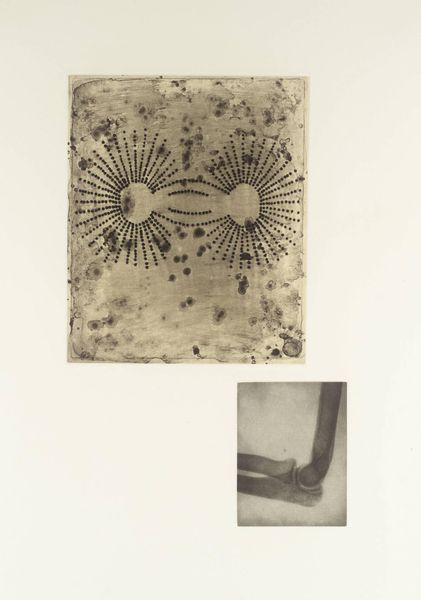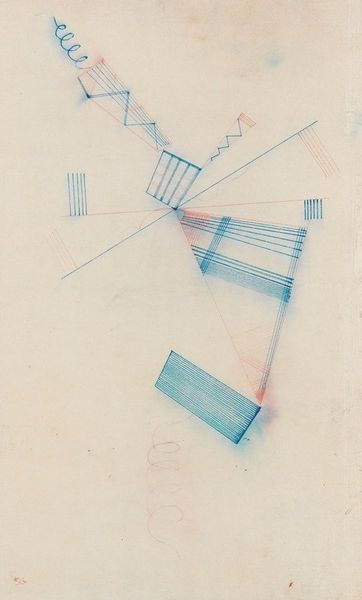
drawing, mixed-media, coloured-pencil, collage, textile, paper
#
drawing
#
mixed-media
#
coloured-pencil
#
collage
#
textile
#
paper
#
coloured pencil
#
mixed medium
#
mixed media
#
watercolor
Dimensions: overall: 52.4 x 30.7 cm (20 5/8 x 12 1/16 in.)
Copyright: National Gallery of Art: CC0 1.0
Editor: This is "Textile: Technique Demonstration," made sometime between 1935 and 1942 by an anonymous artist. It combines drawing, colored pencil, collage, and textile on paper—it’s like a study in contrasting textures, with one patch rendered realistically and another one quite abstract. What's most striking to you about the way this was made? Curator: It's precisely this conscious engagement with materiality that commands my attention. Look at how the anonymous maker lays bare the labor, showcasing techniques alongside the image. What does this layering of representation, where the textile is both depicted and perhaps alluded to materially through collage, suggest about the status of craft versus fine art at the time? Editor: That's interesting. So, you are suggesting the artist challenges that hierarchy by showcasing the "how-to" and maybe elevating what was perceived as just a craft or simple making? Curator: Exactly. The piece draws attention to its own means of production, dismantling notions of art as purely intellectual. The drawing mimics a quilt, perhaps, with each patch a demonstration. The stitching is clearly delineated. Does this imply that the social function of textile production, often associated with domesticity and women's work, is being reframed as a valid artistic endeavor? Editor: I see what you mean. By focusing on technique, the artist seems to democratize the artistic process, making it accessible. Almost like saying, "Anyone can do this; here’s how.” It's more than just an object; it's almost a lesson. Curator: Precisely. The very act of demonstrating subverts the idea of artistic mystique. What’s left is an emphasis on the raw materials and the process itself. It invites us to consider art not as a singular creation but as a continuum of labor and skill. Editor: So, it encourages us to question the social and economic forces behind the creation of art beyond aesthetics and that is really valuable for thinking about art today! Thanks so much for that perspective. Curator: My pleasure. It's these unsung explorations of process and labor that give us a richer understanding of art's multifaceted nature.
Comments
No comments
Be the first to comment and join the conversation on the ultimate creative platform.
